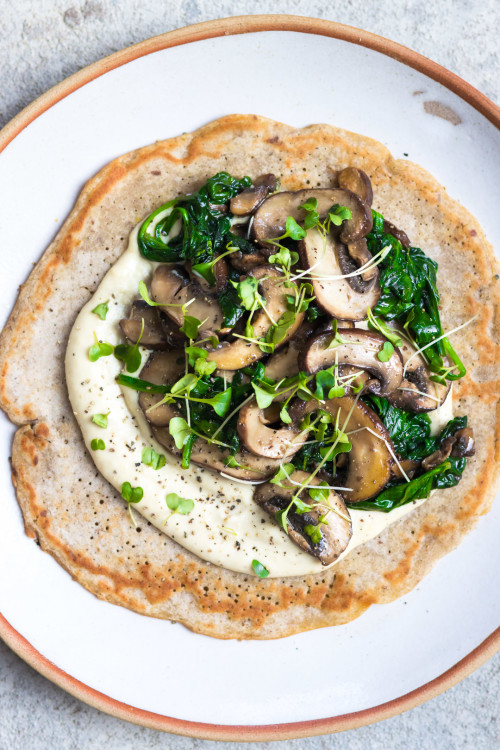You may have heard the term macronutrients in discussions or articles about nutrition, but often it is simply assumed that everyone knows what this means. In this article, we wanted to provide the clearest breakdown possible of what macronutrients are, and what they do for us and our bodies.
Macronutrients are the essential components of our food, and provide us with the fuel we need to live. They are our source of energy, and support the structure and function of cells. Day and night, we use energy from macronutrients for everything from breathing and keeping our heart beating, to regulating our body temperature and regenerating cells in the body.
Put simply, we want a balance of the three macronutrients: carbohydrates, proteins, and healthy fats. To help you understand these fully, here’s a breakdown of each macronutrient, where we get it from, and how to healthily incorporate it into your diet.
Carbohydrates
Carbohydrates are the body’s preferred source of energy, while also providing fibre, which supports the health-promoting bacteria in our gut. While carbohydrates are essential, the type you eat makes a big difference to energy levels and wellbeing.
Carbohydrates can be classified into two types: simple and complex. Simple carbohydrates are found in foods like sugars, white flour, and sugary drinks. While some sources of simple sugars, such as fruits, contain natural sugars along with fibre, vitamins, and antioxidants, highly processed simple carbs can lead to rapid blood sugar spikes and crashes, causing energy fluctuations and cravings.
Complex carbohydrates, found in foods like vegetables, beans, and whole grains, provide more sustained energy as they take longer to digest. These nutrient-dense foods are rich in fibre, vitamins, and minerals, contributing to long-lasting satiety and steady energy levels.
When choosing fruits and vegetables, prioritising seasonal, fresh produce can enhance flavour, reduce exposure to preservatives, and be more cost-effective. While taste is important, opting for in-season produce ensures you get the best quality and nutritional value. Here’s a rough guide:
- Spring: artichoke, asparagus, leeks, lettuce, peas, peppers, rocket, spinach, pomegranate
- Summer: strawberries, raspberries, peaches, nectarines, courgette, cucumber, beetroot
- Autumn: butternut squash, pumpkin, mushrooms, carrots, cavolo nero, blackberries, plums, pears
- Winter: apples, pears, brussels sprouts, cabbage, cauliflower
Protein
Proteins perform a wide range of functions in the body. They serve as the building blocks for cells and tissues, providing structure and support, act as enzymes to catalyse biochemical reactions, facilitate communication and signalling between cells as hormones and receptors, and help defend the body against pathogens as antibodies. They are also crucial for transporting molecules across cell membranes and within the bloodstream.
A common misconception is that plant-based diets provide insufficient protein. Animal products contain all nine essential amino acids (the building blocks of all proteins), making them "complete" proteins. While individual plant proteins may be lower in one or more amino acids, they are not all deficient in the same ones. Consuming a variety of plant protein sources ensures a complete amino acid profile, making it easy to meet protein needs. In this article, we’ve collated the top sources of plant-based protein, as well as including some of our best high-protein recipes.
Fats
Although it’s often demonised in common parlance, fat is vital for our health, as an important source of energy as well as playing an essential role in brain function, protecting vital organs, and absorbing vitamins. Fat comes in two main forms: saturated and unsaturated. Research suggest keeping our intake of saturated fats low, as it can cause a rise in levels of an unhealthy form of cholesterol (LDL) that narrows blood vessels and increases the risk of heart disease. Moving toward a diet that is more based on plants and whole foods tends to see a reduction in consumption of saturated fat, and increase intake of beneficial unsaturated fats (found in nuts, seeds, nut butter, olive oil, and avocado). These fats reduce the risks of heart disease, and raise the levels of healthy cholesterol (HDL). This is referred to as “healthy” or “good” because it takes cholesterol from parts of the body where there is too much, and transports it to the liver where it is disposed of.
Summary
When building a balanced plant-based plate, you can think of it very simply, in visual terms. Fruits and/or vegetables should take up about 50% of the space on your plate, with most of the remaining space split between starchy complex carbohydrates and protein sources. Then top things off with a small amount of unsaturated fats. By eating in this way, you’ll be consuming macronutrients in the quantities you need to thrive.












